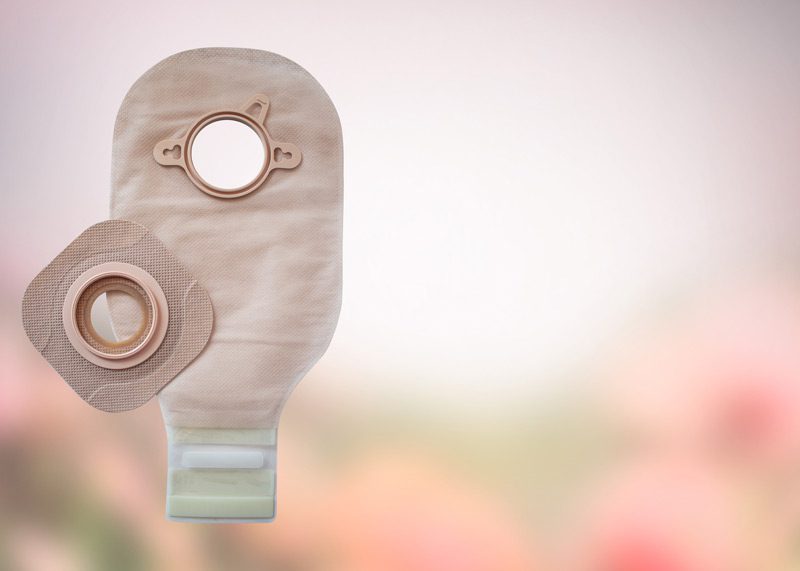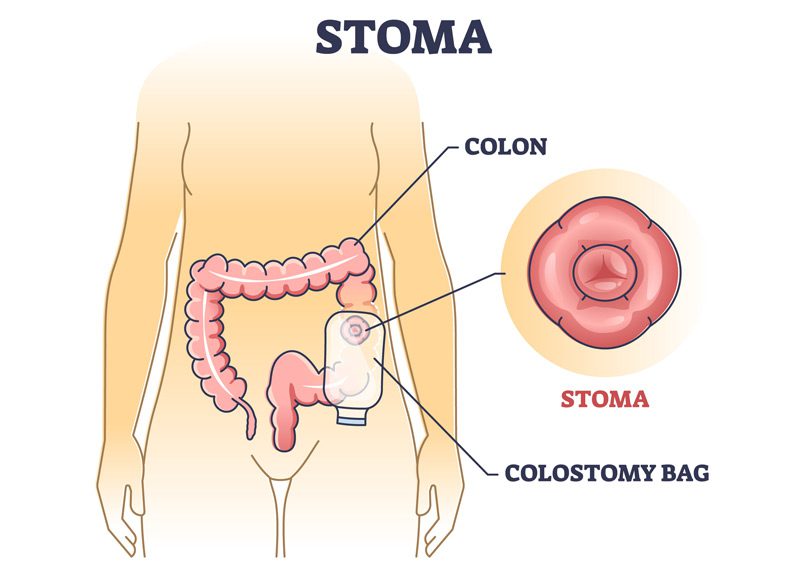

A colostomy is an opening in the abdominal wall created during surgery to address a problem or illness affecting the colon. The end of the large intestine is brought through an opening in the skin, forming a stoma.
A colostomy may be temporary or permanent, large or small. Patients who have undergone a colostomy need specialized care.
How to Care For a Colostomy
To protect the skin around the stoma, a nurse will take the following precautions:
- Maintain the proper size pouch and skin barrier opening
- Routinely change the pouching system to prevent leaks and skin irritation
- Exercise caution when pulling the pouching system away from the skin
- Avoid removing the pouching system more than once per day, unless there’s a medical concern
- Use water to clean the skin around the stoma
- Be on the lookout for sensitivities and allergies

All About Colostomy Irrigation
Some types of colostomies may allow colostomy irrigation to help move the stool through the colon. Irrigation is the simple process of pouring water into the colon through the stoma to support normal bowel movements.
Colostomy irrigation is not as common as it used to be, and the decision to irrigate the colostomy will depend on the patient’s:
- Activity level
- Lifelong bowel habits
- Skill and level of comfort with irrigation
- Personal preferences regarding colostomy
Patients who decide to try colostomy irrigation should experiment with a combination of methods to find one that best matches their body’s normal bowel habits or patterns. A nurse or doctor can help patients determine which method is best for them. It’s important to develop a consistent routine to promote regular bowel functions.
Colostomy Irrigation Equipment
The equipment used in colostomy irrigation includes:
- Plastic irrigation container with a long tube and a cone or tip (to fit snugly against the stoma and run water into the colostomy)
- Irrigation sleeve (to move the waste into the toilet)
- Tail closure clip and belt (for extra irrigation sleeve support; optional)
When And How to Irrigate The Colostomy
Patients performing the irrigation themselves should choose a time in the day when the bathroom is available for extended use. Irrigation may be done after a meal or warm drink. Patients should try to irrigate at the times of day they usually moved their bowels before the colostomy. To begin, gather the irrigation supplies. Then, clamp the tubing and pour about one quart of lukewarm water into the irrigating container.
Hang the container with the bottom of it level with the shoulder when seated on the toilet or on a chair next to it. Seal the plastic irrigation sleeve onto the skin barrier and place the bottom end of the sleeve in the toilet. Lubricate the end of the cone with a water-soluble lubricant. Wait about 10 seconds for the water to empty into the colon and remove the cone. The waste will come in spurts over the next 45 minutes. Once most of the stool has been emptied, clip the bottom of the irrigation sleeve to the top with a tail closure clip. Complete the process by rechecking the seal, reattaching the usual pouch, and rinsing the equipment.
A patient’s home nurse or home health aide will assist in helping the patient learn what they can do for their colostomy care at home.

